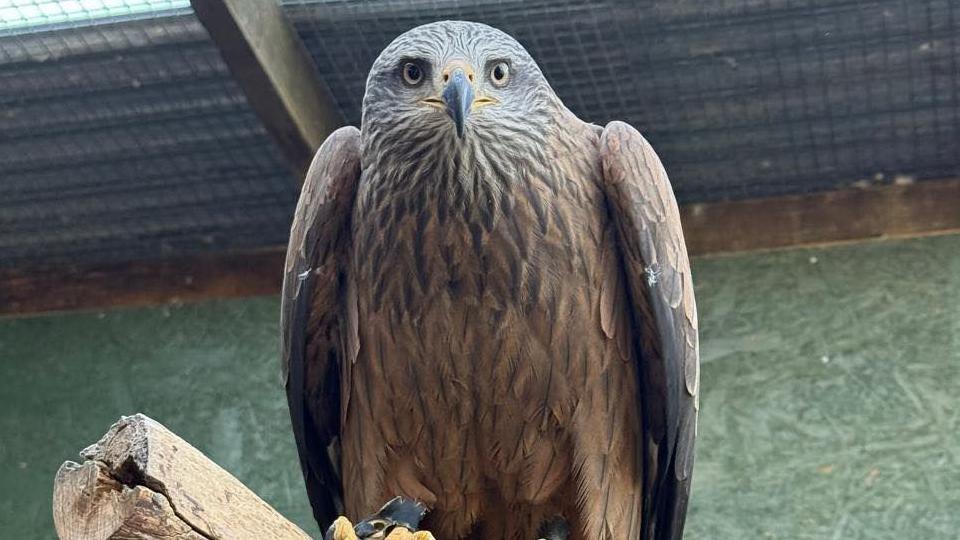'Amazing' bird of prey makes very rare visit to UK
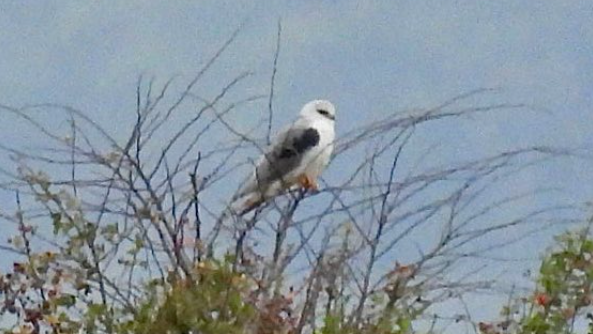
The black-winged kite seen at Slimbridge wetland wildlife reserve in Gloucestershire
- Published
A bird of prey seen in the UK only a handful of times has been spotted at a wetland reserve.
The black-winged kite was pictured near Slimbridge, Gloucestershire, earlier this week in a first for the county.
They are normally found in the warmer climates of South Asia and sub-Saharan Africa, and closer by, in north Africa and central Spain.
"Just seeing how its behaviour is and how it acts in its environment is an amazing thing," said Anna Cork, reserve warden at Slimbridge Wetlands Centre.
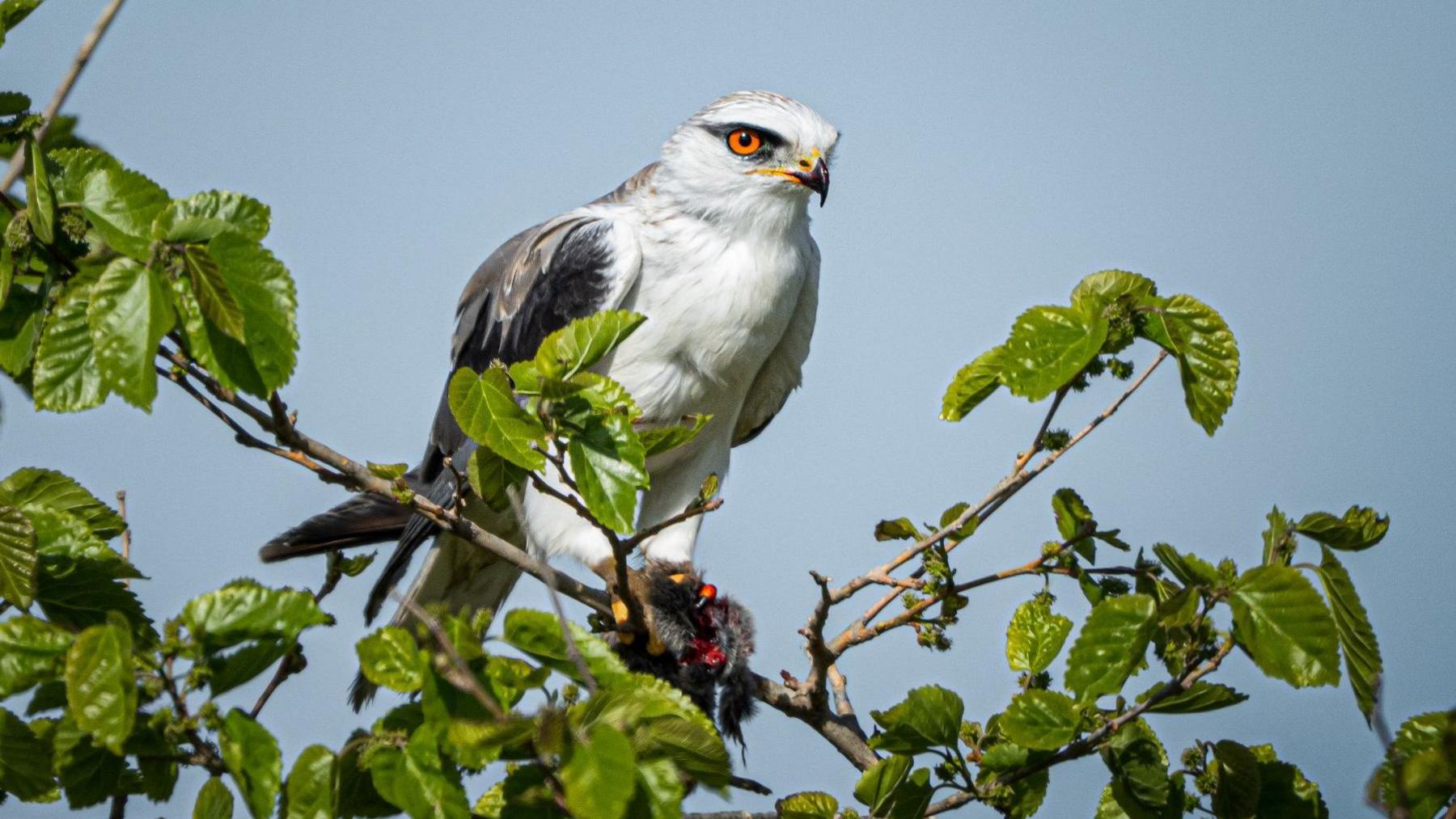
The bird is normally seen in much warmer parts of the world
Black-winged kites – which have red eyes and dark patches on their wings – have previously been seen in Norfolk and in Powys, Wales.
The Slimbridge bird has been seen hovering over fields and resting in hedges or on branches all over the reserve and in the surrounding areas.
"It would be considered a 'vagrant' to the UK – meaning its movement to here is outside its normal migratory range," said Ms Cork.
"They have been moving towards south-eastern Europe so they are being seen in France and the Netherlands as well."
The reason for the bird's changing migration pattern is unclear but it has previously been suggested that climate change is the cause.
"Sometimes they'll just pop over on a certain weather front and have a look," said Ms Cork.
"It's really exciting and it's such a unique and amazing looking bird," she added.
The birds, which are not endangered, have wingspans of up to 95cm (36in).
While they spend most of the daytime alone or in pairs, they have been seen congregating at night in their hundreds, according to the Peregrine Fund.
Get in touch
Tell us which stories we should cover in Gloucestershire
Follow BBC Gloucestershire on Facebook, external, X, external and Instagram, external. Send your story ideas to us on email or via WhatsApp on 0800 313 4630.
- Published2 December 2024
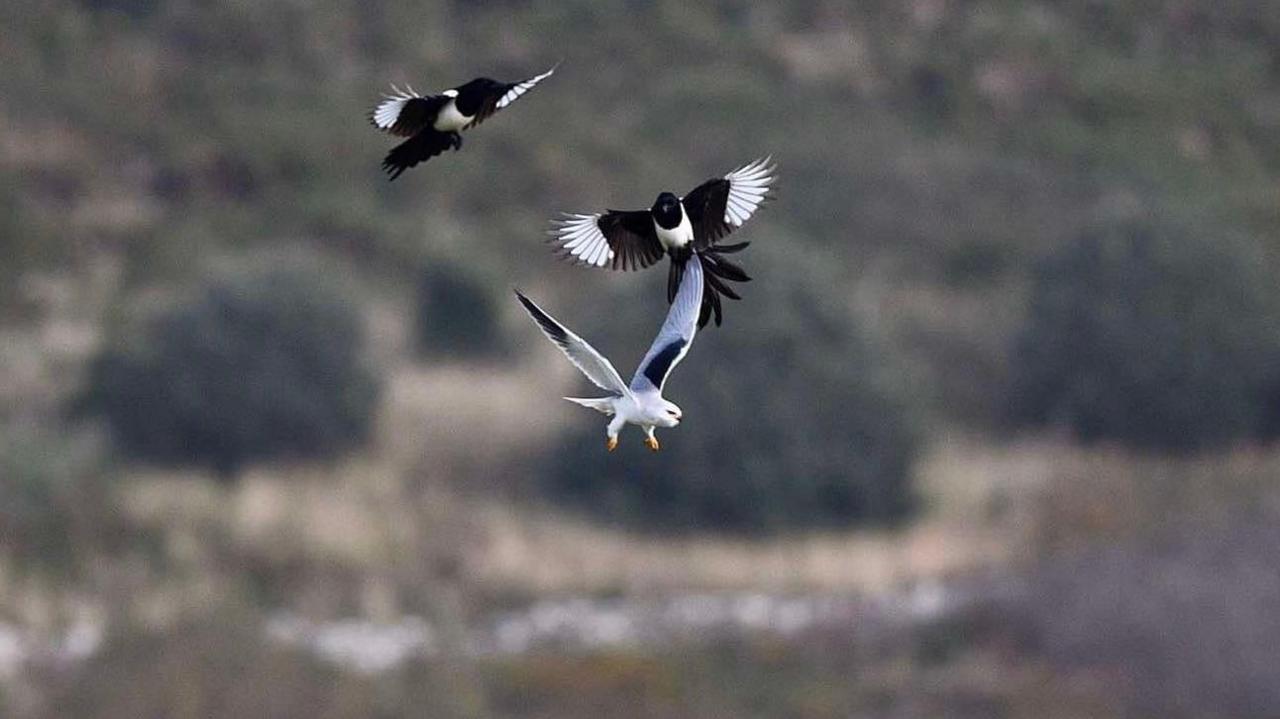
- Published19 July 2023
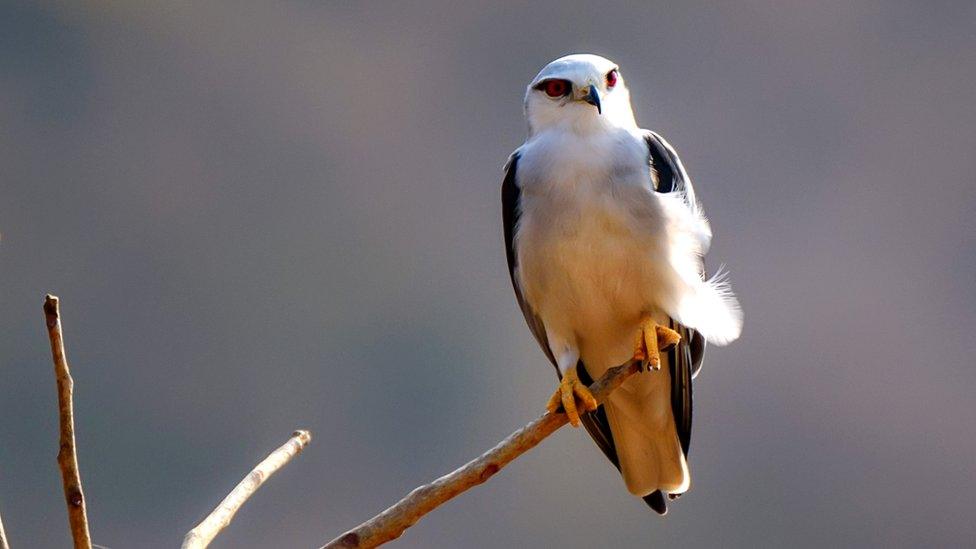
- Published11 April
